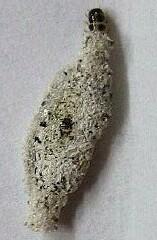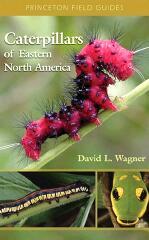 © Dave Porter -
FL © Dave Porter -
FL
|
  Dave Wagner's
field guide dealing with the caterpillars of eastern North America
is a handbook for those who would like to help add to our knowledge
about moths. Many interesting facts about moths can be illustrated
by following a species from the egg through to adulthood. People are
interested in knowing the identity of caterpillars and cocoons that
they have found, and the great majority of caterpillar species are
not yet represented in field guides or on this website. Rearing
caterpillars and photographing them as they go through several
instars, then as pupae, and finally as freshly eclosed adults (and,
if lucky, as mating pairs) can add much to our store of knowledge. Dave Wagner's
field guide dealing with the caterpillars of eastern North America
is a handbook for those who would like to help add to our knowledge
about moths. Many interesting facts about moths can be illustrated
by following a species from the egg through to adulthood. People are
interested in knowing the identity of caterpillars and cocoons that
they have found, and the great majority of caterpillar species are
not yet represented in field guides or on this website. Rearing
caterpillars and photographing them as they go through several
instars, then as pupae, and finally as freshly eclosed adults (and,
if lucky, as mating pairs) can add much to our store of knowledge.
Rearing can be done in small containers, store-bought or
improvised, and can begin with eggs, caterpillars or cocoons. The
biggest challenge may be in knowing what to feed larvae, but that
problem is usually solved by feeding them fresh foliage of the
plants on which they are found. If the caterpillar can be identified
you can usually find host plant information in the Wagner or Covell
field guides or on the Internet at places such as BugGuide.Net.
Your clear photographs will be welcomed here to be used on
species pages and, if you wish to write about your experiences, in
the Papers and Notes section of this website.
|
 Availability
at Amazon.com Availability
at Amazon.com
|